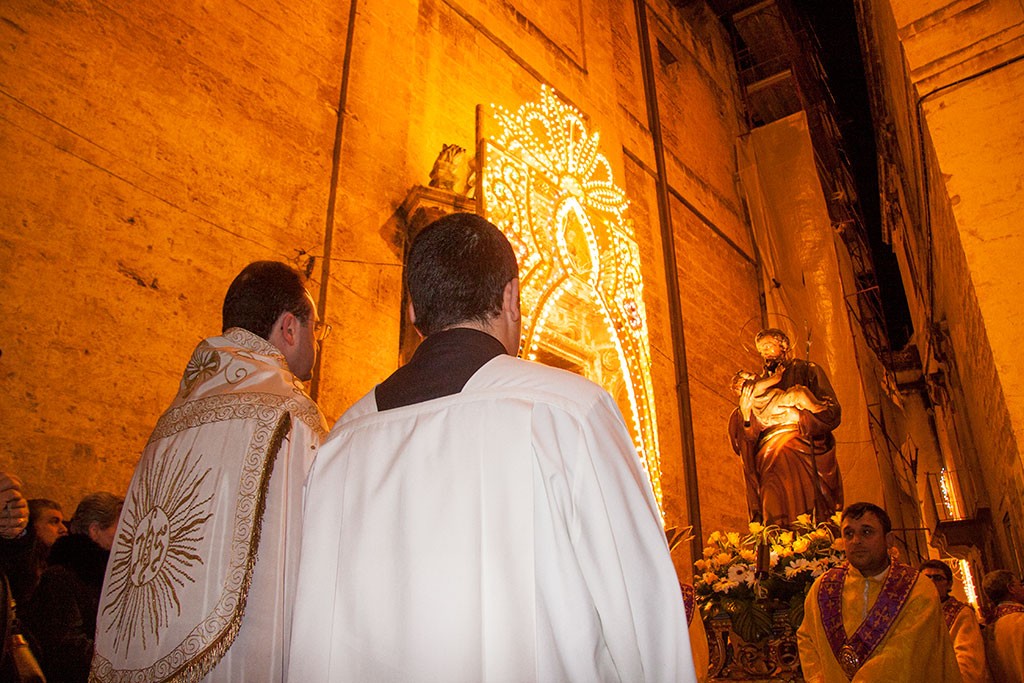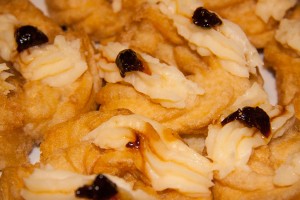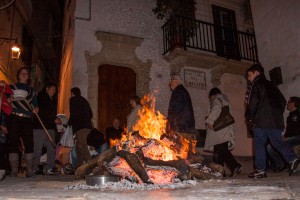The Saint of the bonfires
If you come to Monopoli in March, you cannot miss the traditional visit to the bonfires of San Giuseppe, a privileged saint who receives a devotional tribute with a fire ritual. He is the protector of the poor, craftsman and carpenters in particular. Monopoli has maintained a significant cult for the Saint over the centuries thanks to the dynamism of its confraternity. The celebrations in his honour date back to around 1613, when the confraternity of San Giuseppe was founded.
Blessed bread and processions
After the evening mass on the 19th of March, you can enjoy an evocative procession when the statue of the Saint passes through the historical centre. Together with all the confraternities and the participation of simple believers, you will also see the Sisters of San Giuseppe, recognizable by a medallion depicting the Saint around their neck. On the 19th of March, after a Triduum of prayers and masses, the bonfires are lit (called “fème”), and one of the most important events is the offering and distribution of blessed breads, a symbol of the charity and generosity of San Giuseppe. The bread represents a thanksgiving to the Saint and a meaning of sharing and unity around his merciful figure. As in the past, the bread is still considered miraculous, and is given to the sick who are asked to invoke the Saint to give them strength.
The meaning of fire
A little band plays through the streets of the town from the afternoon and fireworks emphasize the importance of the ceremony, celebrated around the church of San Leonardo. Outside it is lit with decorative lights, while the inside is decorated with yellow drapes.
Bonfires are the main attraction. They represent the ancient popular piety and are lit when the procession ends and the statue “goes back home”. In the narrow streets of the historical centre it is possible to find many little bonfires which come from the desire of some families to keep this old tradition alive. Other bigger bonfires are prepared on the outskirts of town days before the feast. In the past, the fire ritual had a dual allegorical meaning: to purify and regenerate. On the one hand it should drive away diseases, hunger and cold and on the other regenerate the men and the environment for the new season. For this reason the feast of St Giuseppe is considered to be “a transition ceremony” with the bonfires destroying all the harmful elements by reducing them to ash.
Tasting “Zeppola”
You will no doubt feel part of the community and enjoy a pleasant feeling as you get lost wandering around the white walls of the historical centre which are lit up by the flames. The joy of the visitors around the bonfires brings back memories of when winter and its anxieties came to an end: the night becomes magical and you will be captured by the spring air. You will enjoy dancing and eating traditional food like “fave” beans, lupins and chickpeas cooked in the ashes as well as trying local wine and taralli with the local people. Among the traditional dishes you have to try is “zeppole di San Giuseppe”, a kind of donut available in two versions: fried, which is the classic version or oven-baked, a lighter version, both topped with white cream and cherries or black cherry jam.




